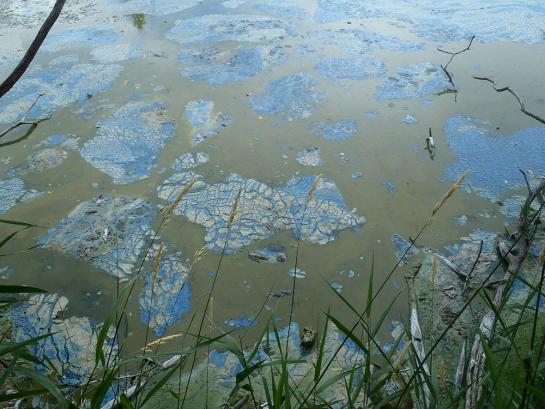An algal bloom or algae bloom is a rapid increase or accumulation in the population of algae in freshwater or marine water systems, and is recognized by the discoloration in the water from their pigments. Cyanobacteria were mistaken for algae in the past, so cyanobacterial blooms are sometimes also called algal blooms. Blooms which can injure animals or the ecology are called “harmful algal blooms” (HAB), and can lead to fish die-offs, cities cutting off water to residents, or states having to close fisheries. Also, a bloom can block out the sunlight from other organisms, and deplete oxygen levels in the water. Also, some algae secrete poisons into the water.
Freshwater algal blooms
Further information: Nutrient pollution and Eutrophication
Freshwater algal blooms are the result of an excess of nutrients, particularly some phosphates.[ The excess of nutrients may originate from fertilizers that are applied to land for agricultural or recreational purposes. They may also originate from household cleaning products containing phosphorus.[5] These nutrients can then enter watersheds through water runoff.[6] Excess carbon and nitrogen have also been suspected as causes. Presence of residual sodium carbonate acts as catalyst for the algae to bloom by providing dissolved carbon dioxide for enhanced photosynthesis in the presence of nutrients.
When phosphates are introduced into water systems, higher concentrations cause increased growth of algae and plants. Algae tend to grow very quickly under high nutrient availability, but each algal is short-lived, and the result is a high concentration of dead organic matter which starts to decay. The decay process consumes dissolved oxygen in the water, resulting in hypoxic conditions. Without sufficient dissolved oxygen in the water, animals and plants may die off in large numbers. Use of an Olszewski tube can help combat these problems with hypolimnetic withdrawal.

















